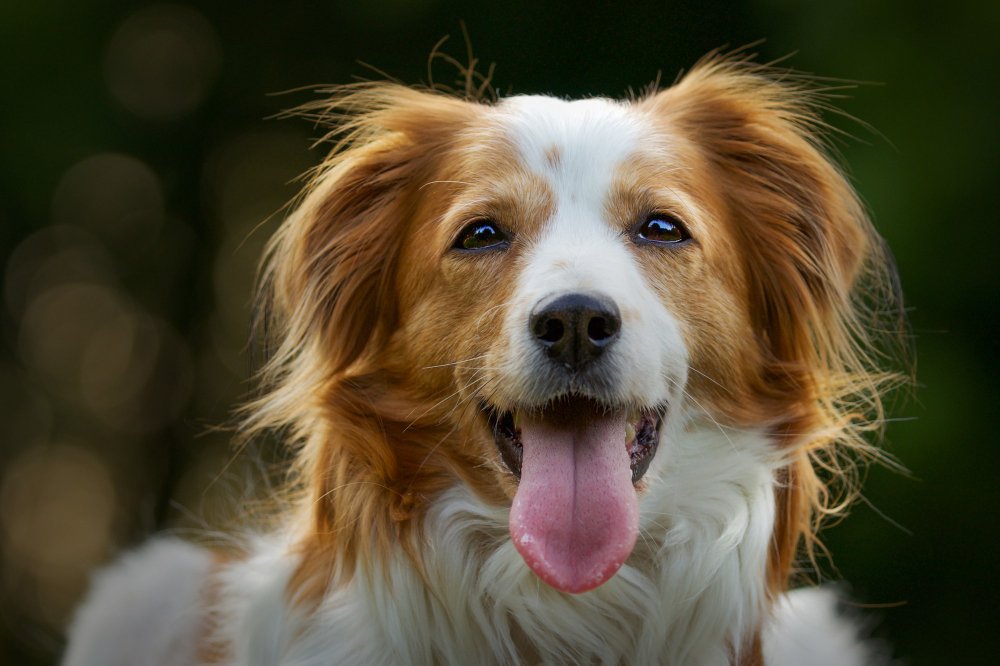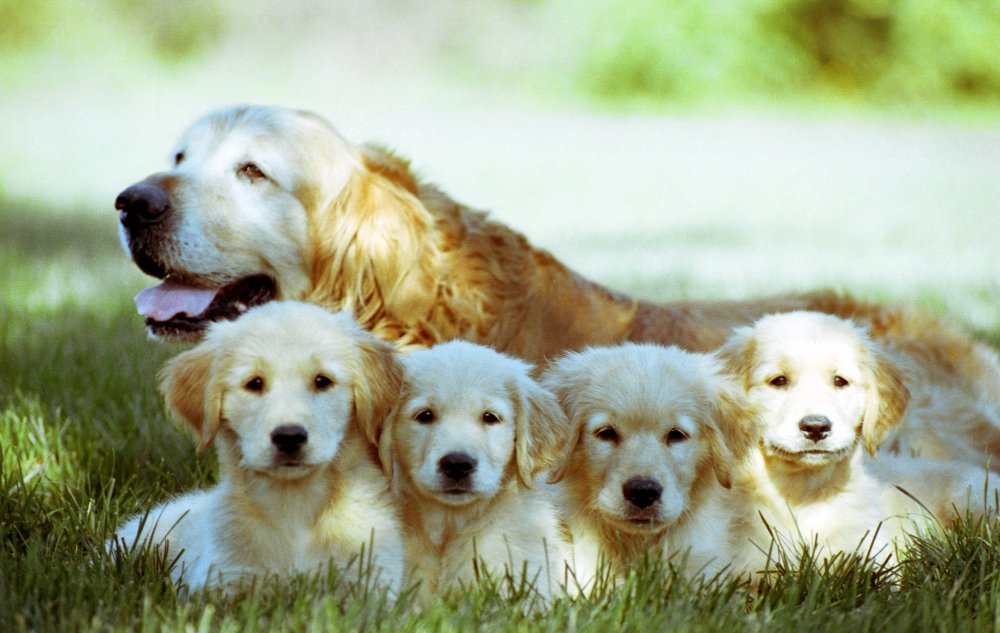Golden retrievers are known for their intelligence, loyalty, friendliness, and affection. They are easy to train, eager to please, and always ready to have fun. They are also very gentle and patient with children, other animals, and strangers. They love to be around people and will shower you with unconditional love and devotion.
But how do you love your golden retriever back? How do you make sure they are happy and healthy? How do you show them how much you appreciate and care for them?
In this article, we will provide you with some tips and advice on how to love your golden retriever and make them feel like the most special dog in the world.
How to Understand Your Golden Retriever?
Understanding your golden retriever is not only a way to communicate with them, but also a way to appreciate and respect them.
It can help you know what your golden retriever is feeling, thinking, and wanting, and how to respond to them accordingly.
Understanding can also help you avoid misunderstandings, conflicts, or frustrations, and create a harmonious and happy relationship.
Golden retrievers have some unique ways of expressing themselves, and they use their body language, vocalizations, and actions to convey their emotions and intentions.
They also have their own personality, preferences, and quirks, that make them different from other dogs. Here are some examples of how and what to understand your golden retriever:
Body Language
Body language is a key way to understand your golden retriever, as they use their tail, ears, eyes, mouth, and posture to show how they feel and what they want.
For example, a wagging tail can mean excitement, happiness, or nervousness, depending on the speed and direction of the wag.
Ears that are perked up can mean alertness, curiosity, or interest, while ears that are flattened can mean fear, submission, or sadness.
Eyes that are wide open can mean surprise, attention, or challenge, while eyes that are half-closed can mean relaxation, contentment, or trust.
A mouth that is open and panting can mean joy, playfulness, or stress, while a mouth that is closed and tight can mean anger, aggression, or pain.
A posture that is relaxed and loose can mean confidence, comfort, or friendliness, while a posture that is tense and stiff can mean anxiety, discomfort, or hostility.
Vocalizations
Vocalizations are another way to understand your golden retriever, as they use their barks, howls, whines, and growls to communicate with you and other animals.
For example, a high-pitched bark can mean excitement, happiness, or greeting, while a low-pitched bark can mean warning, threat, or protection.
A howl can mean loneliness, boredom, or calling, while a whine can mean hunger, thirst, or pain. A growl can mean anger, aggression, or fear, while a whimper can mean sadness, submission, or appeasement.
Actions
Actions are a third way to understand your golden retriever, as they use their behaviors, habits, and gestures to express their emotions and intentions.
For example, licking your face can mean affection, gratitude, or submission, while bringing you gifts can mean generosity, pride, or invitation.
Jumping on you can mean excitement, happiness, or attention while lying on your feet can mean comfort, security, or loyalty.
Nudging you with their nose can mean curiosity, interest, or request while leaning on you can mean love, support, or reassurance.
How to Care for Golden Retrievers?

Loving your golden retriever also means taking good care of them. Caring for your golden retriever is not only essential for their well-being but also for their happiness and comfort.
By providing them with proper care, you can prevent many health problems, improve their quality of life, and show them how much you value them.
Golden retrievers have some special needs that require your attention and dedication. One of them is their long, thick, and beautiful coat.
Their coat needs regular brushing, at least once or twice a week, to prevent matting, shedding, and tangling. You should also check their coat for any signs of fleas, ticks, or skin infections, and treat them accordingly.
Bathing your golden retriever should be done only when necessary, as too frequent bathing can strip their natural oils and dry their skin.
Another special need of your golden retriever is their appetite. Golden retrievers are known for their love of food, and they can easily overeat if you are not careful.
To prevent this, you should feed your golden retriever a balanced and nutritious diet, and avoid giving them too many treats or human food.
You should also measure their food portions, and feed them twice a day, rather than leaving food out all the time.
You can also use puzzle toys or slow feeders to make their meals more fun and challenging.
A third special need of your golden retriever is their health. Golden retrievers are prone to some genetic and hereditary diseases, such as hip dysplasia, elbow dysplasia, eye disorders, or cancer.
To detect and treat these diseases early, you should take your golden retriever to the vet regularly, and follow their recommendations on vaccinations, deworming, and spaying or neutering.
You should also monitor your golden retriever’s health at home, by checking their ears, teeth, nails, and weight. You should clean their ears weekly, brush their teeth daily, trim their nails monthly, and weigh them every few months.
By following these tips and advice, you can care for your golden retriever in the best way possible, and make them feel loved and pampered.
How to Play with Your Golden Retriever?

Playing with your golden retriever is not only fun, but also beneficial for their mind, body, and spirit. Playing can help your golden retriever burn off excess energy, stay fit and healthy, relieve stress and boredom, and improve their social skills.
Playing can also strengthen your bond with your golden retriever, and make them feel happy and loved.
Golden retrievers are very playful and energetic dogs, and they need regular exercise and mental stimulation.
You should provide your golden retriever with at least an hour of physical activity every day, and vary the types and intensity of the exercise to keep them interested and challenged.
There are many ways and games to play with your golden retriever, and you can use their favorite toys, treats, or praise as rewards and motivators.
Here are some examples of how and what to play with your golden retriever:
Fetch
Fetch is a classic game that most golden retrievers love, and it can be played indoors or outdoors, with a ball, a frisbee, a stick, or any other object that your golden retriever likes to chase and retrieve.
You can throw the object as far as you can, and ask your golden retriever to bring it back to you. You can also add some variations, such as hiding the object, changing the direction, or using different commands.
Tug-of-war
Tug-of-war is another game that many golden retrievers enjoy, and it can be played with a rope, a toy, or a piece of cloth.
You can hold one end of the object, and let your golden retriever grab the other end with their mouth. You can then pull and tug on the object, and let your golden retriever do the same.
Hide-and-seek
Hide-and-seek is a game that can test your golden retriever’s intelligence and sense of smell, and it can be played with yourself, another person, or a toy.
You can hide yourself, the other person, or the toy in a different room, behind a door, under a blanket, or in a closet. You can then call your golden retriever’s name, and ask them to find you, the other person, or the toy.
You can also give them clues, such as making noises or leaving a trail of treats.
Agility courses
Agility courses are a great way to challenge your golden retriever’s physical and mental abilities, and they can be set up in your backyard, in a park, or in a specialized facility.
One can use various obstacles, such as tunnels, jumps, ramps, hoops, or weave poles, and guide your golden retriever through them with your voice, hand signals, or a leash.
You can also time your golden retriever, and reward them for their speed and accuracy.
How to Train Your Golden Retriever?
Training your golden retriever is not only a way to teach them good manners, obedience, and safety, but also a way to bond with them, challenge them, and reward them.
It can help your golden retriever become a well-behaved and happy member of your family, and prevent them from developing bad habits, such as jumping, barking, or chewing.
Golden retrievers are very smart and eager to please dogs, and they can learn many commands and tricks. They are also very responsive and cooperative and will follow your lead and guidance.
You should start training your golden retriever as early as possible, and be consistent and patient with them. You should also make the training sessions fun and positive, and avoid any harsh or negative methods.
There are many ways and methods to train your golden retriever, and you can choose the ones that suit you and your dog best. Here are some examples of how and what to train your golden retriever:
Positive Reinforcement
Positive reinforcement is a training method that involves rewarding your golden retriever for doing something right and ignoring or redirecting them for doing something wrong.
You can use treats, toys, praise, or affection as rewards, and give them to your golden retriever immediately after they perform the desired behavior. You can also use a marker, such as a clicker or a word, to signal to your golden retriever that they have done well.
Positive reinforcement can help your golden retriever learn faster, and associate the training with something pleasant and enjoyable.
Clicker Training
Clicker training is a type of positive reinforcement that uses a small device that makes a clicking sound as a marker. You can use the clicker to mark the exact moment when your golden retriever does something right, and then give them a reward.
The clicker can help your golden retriever understand what you want them to do, and make the training more precise and effective.
You can use the clicker to teach your golden retriever basic commands, such as sit, stay, come, or heel, or more advanced tricks, such as roll over, shake, or speak.
Hand Signals
Hand signals are a way to communicate with your golden retriever using your body language, rather than your voice. You can use hand signals to give your golden retriever commands, such as sit, down, or stay, or to direct them, such as left, right, or forward.
Hand signals can be useful when your golden retriever is too far away to hear you, or when you want to be quiet or discreet.
You can also combine hand signals with verbal commands, to make the training more clear and consistent.
Final Thoughts
Loving your golden retriever can enrich your life and theirs in many ways. It can make you both happier, healthier, and more fulfilled. It can also teach you valuable lessons, such as patience, kindness, and gratitude. By following the tips and advice in this article, you can show your golden retriever how much you love them, and how much they mean to you. We hope you have found this article helpful, and we encourage you to follow your heart and enjoy your time with your golden retriever.

